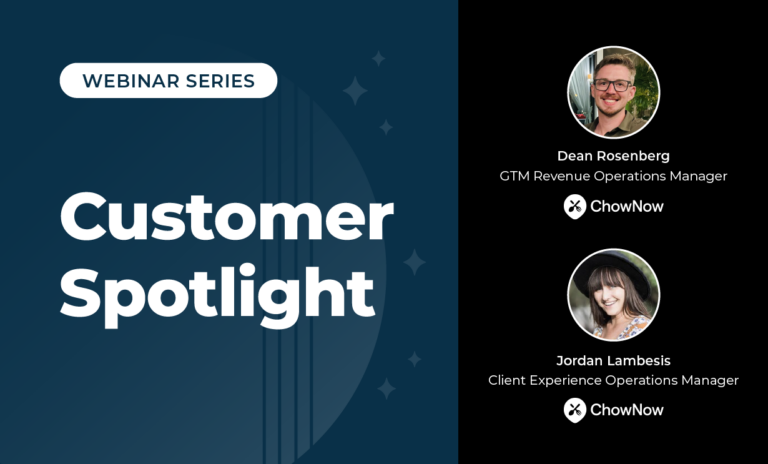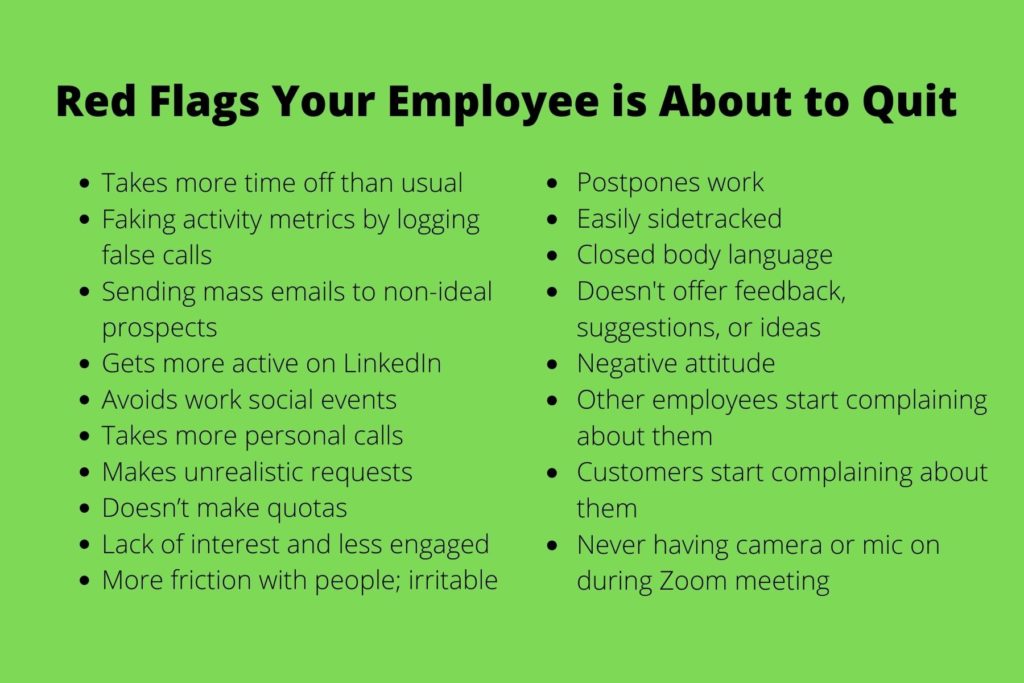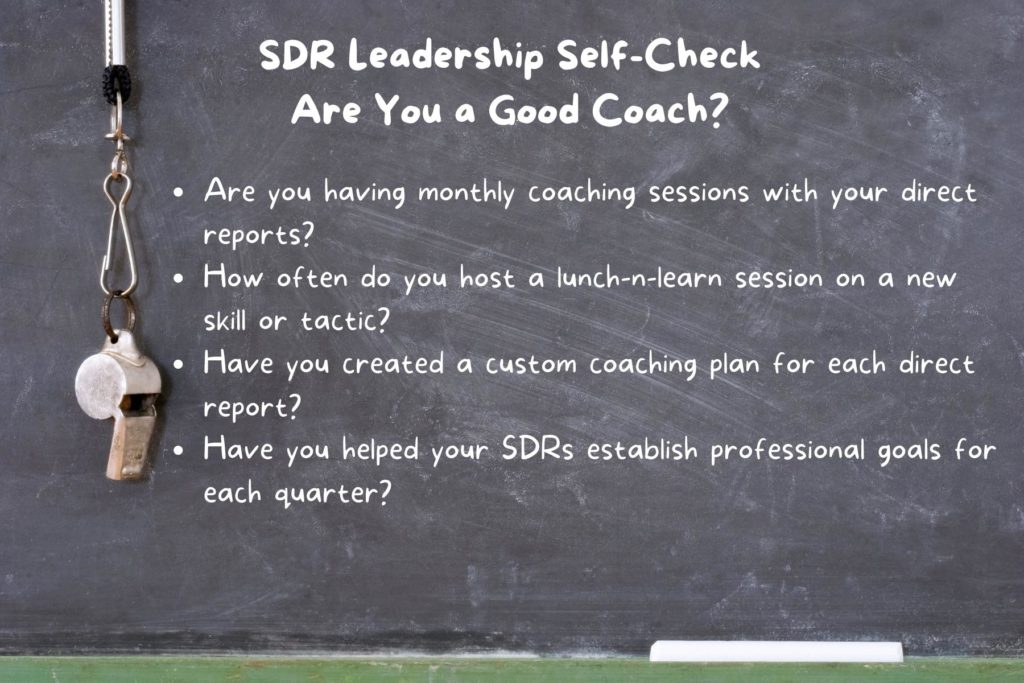How is your SDR churn rate these days?
Here’s a common scenario: you spent three months tirelessly vetting, interviewing, and selecting the most promising SDR applicants. After much deliberation, you hired bright, motivated people you believed would work hard and be coachable.
You then invested another three months training and getting your new SDRs fully functional on your tech stack and script.
Fast forward 18 months and three of your top-performing SDRs have already resigned.
So what’s got your employees blasting Johnny Paycheck as they peel out of your parking lot?
Top Reasons SDRs Quit
Search for “Sales Development Representative” jobs in LinkedIn and you’ll typically find 40,000+ openings. It’s one of the more popular entry-level jobs for recent college graduates, but also has a notoriously high turnover rate.
According to The Bridge Group’s 2021 Sales Development Report, the average tenure of SDRs is 1.8 years, with 56% sticking around between 13 and 24 months.
So why do SDRs rarely last two years on the job?
After interviewing SDRs, experienced sales managers, and tapping into the wisdom of TikTok, we uncovered the five basic reasons SDRs quit:
#1 No Upward Mobility
The Bridge Group reports the overwhelming majority (93%) of companies offer at least one form of SDR career path. The theory being, an internally promoted SDR should cost less to hire and train, stay longer, and ultimately sell more. After spending an average 17.5 months in the trenches, around 70% of SDRs are promoted to account executives (AE). SDRs expect a career path when they sign on with your company. If very few ever get promoted, your SDRs will quit.
#2 Lack of Support
An SDR who lacks support may be experiencing the following:
- Inadequate revenue orchestration tools to reach their quotas
- No appreciation, no recognition
- No one to go to for questions or guidance
- No sense of belonging on the team
When support is lacking, your SDR will start to believe they cannot be successful at your company, no matter how hard they try.
#3 Not Learning Anything
Nothing says “dead end job” like a role where there are no opportunities to gain skills or learn from a mentor. In fact, a Docebo workplace survey indicated that one in three employees (36%) say they would quit their job due to a lack of learning and development opportunities.

#4 Poor Compensation Compared to Market
SDR pay is no secret. Repvue’s data on compensation for sales development representatives is generally spot-on and SDRs know it. September 2022 Repvue numbers show the average SDR base compensation slightly above $53K with total compensation around $83K. If your base and commission are not aligned with the market, your SDRs will leave for better pay elsewhere.
#5 Sales is Not a Good Fit
Making 100+ “touches” a day with phone calls, emails, and social selling is a tedious, grueling job. And for those new to rejection, the workload can be overwhelming. On average, only 68% of reps in a given group achieve quota. Your SDRs may just decide that sales is not for them.
Now if your SDRs are mysteriously quitting, you may have a leadership problem. A 2021 Tenspot study found that 46% of workers say they currently have a manager or a team lead that makes them want to quit their job.
Warning Signs Your SDR Is About to Quit
I recently quit my job at an orange juice factory — I just couldn’t concentrate. But in all seriousness, if Ace of Base saw the signs, a good sales manager should too. An SDR with one foot out the door will generally display some noticeable behaviors when they’re about to quit.
Things You Can Do to Retain Good SDRs
Turnover is expensive and lowers employee morale, potentially triggering a domino effect on the rest of your team. Luckily, there are many actionable steps you can take to lower churn and hold onto good employees.
#1 Establish a Solid Onboarding Program
Estimates on SDR ramp up vary from eight weeks to four months, depending on your RevTech stack and sales engagement platform (SEP). Educate SDRs on your organization and its products, and let them meet with marketing, customer success, department heads, etc. Teach them your ideal customer profile (ICP) and your target market. Get them comfortable and confident when speaking with prospects.
Companies sometimes shy away from investing in their SDRs, not wanting to waste time and effort for such a high-turnover position. However, the expensive truth is: making a dedicated effort to develop your employees makes them less likely to leave.
In addition to a formal onboarding process, LeanData’s new SDRs and AEs attend a three-day intensive sales bootcamp. These new employees showcase what they’ve learned about LeanData, practice sales skills, and even learn to develop their own personal brand.
Caleb Blondet-Fraser, LeanData’s Sales Enablement Manager, runs the SDR bootcamp and advises, “Give new SDRs an early win to give them confidence so they will succeed in the role. We have a certification moment where the SDRs cold call their manager, send them a prospecting email, and certify that they can now prospect accounts. That’s the moment of achievement.”

#2 Develop a Promotion Path
Create a promotion path not only within your SDR organization, but also cross-departmentally. Outline concrete steps toward promotion. This gives SDRs something to reach for and, in a very practical sense, creates a pipeline of talent for the entire organization.
David Bentham, Director of Sales Development at Cognism shares the following tips on SDR retention: “Always keep your SDRs focused on the next thing and keep them challenged. At Cognism, we do career development plans every six months where we discuss our SDRs’ career goals. That helps us align their goals with the company goals. We then refer back to the goals in every weekly one-on-one meeting.”
#3 Pay Fair Market Compensation
With today’s online compensation platforms like Repvue, Payscale, and Ziprecruiter, as well as compelling day-in-the-life SDR content on social media, SDR compensation is practically an open book. Fair market pay generally consists of a base salary plus commission for metrics like touchpoints, accepted meetings, and closed/won revenue. The simple truth is, if you don’t pay your SDRs what they’re worth, they can and will go elsewhere.
#4 Strong Leadership
The best SDR managers were once great SDRs themselves. They tend to be empathetic leaders and take a coaching approach. If an SDR makes a mistake, a good leader will coach them into not making the same mistake again. SDR managers should talk about burnout and make sure employees know their value extends beyond hitting their quotas.
People will work harder for a leader who understands their struggles, offers to help, and listens to their point of view.
Rob Simmons, an experienced sales leader, provides additional insight, saying, “Coach and develop SDRs as sales reps and people. Top performers always want to be getting better so give them additional responsibilities aligned with their desired career path.”
Hire, Train, Motivate, Retain
Lowering SDR churn and retaining good employees is not complex. If you hire the right people, provide the proper training and help them grow, employees will want to stay.
On a Revenue Generator Podcast episode, commercetools’ CMO Jen Jones said, “I’ve often brought in people who have no experience but talent, and just invested in teaching them to be great in that role.”
Whether it’s the Great Resignation, the Quiet Quit, a strong or weak labor market, making a personal and professional investment in your SDRs will always pay dividends.










